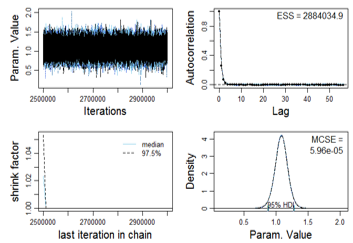Accident environments exist across the six phases of the launch, which further demonstrates the importance of Space Nuclear Launch Safety analyses. Sandia’s ability to identify and mitigate mission risk is critical to the success of mission launch.
Representative Accident Scenarios (RASs)
Launch missions are divided into six phases. These phases include prelaunch, early launch, late launch, suborbital reentry, orbital reentry, and long-term reentry. In each phase, accident scenarios are constructed. Then, each accident environment is grouped into a Representative Accident Scenario (RAS). Results are then combined from each RAS into phase and overall results based on relative probability.
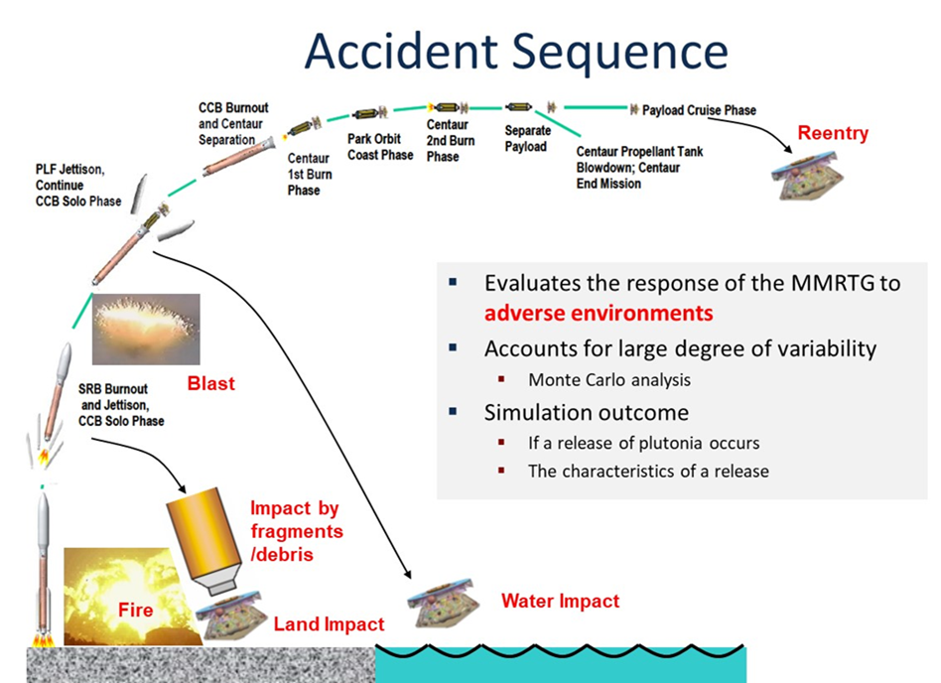
Accident Environment Samples
Meteorological conditions vary in space and time, which governs the transport and diffusion of the released material. These conditions include wind velocity components, relative humidity, atmospheric turbulence, and pressure. The local meteorology strongly affects both the potential rise of the particles from the fire environments and the transport of the particles to the surrounding areas. The transport of released material is determined by Sandia-developed Transport Of Radioactive Materials (STORM) code. STORM calls the Initial Atmospheric Transport (IAT) code to determine the initial rise of the fireball and particles. STORM then uses the National Oceanic and Atmospheric Administration’s Hybrid Single Particle Lagrangian Integrated Trajectory (HYSPLIT) model to determine the subsequent transport and deposition.
Establish transport and deposition of source terms
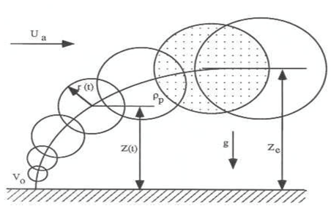
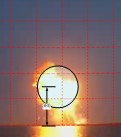
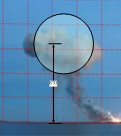
Meteorological effects modeled by HYSPLIT
Particle Transport
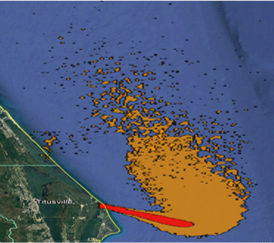
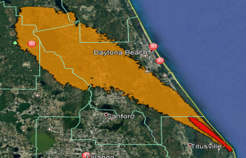
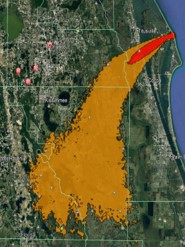
Some blasts and impacts have the potential to breach the multiple layers of protection. Analyses are performed to prove effectiveness and efficacy of the materials and design used when engineering the radioactive power system. For example, the simulation below shows that due to the numerous layers of containment and protection, no radioactive material is released upon impact at a velocity of 100m/s, a much greater velocity than 60m/s – terminal velocity.

Determining the range of end states
Blasts
- Launch destruct
- Shockwave from ground impact of propellant tanks
- Shockwave from ground impact of solid propellant fragments
Impacts
- Ground surface
- Spacecraft and launch vehicle debris/fragments
- Solid propellant fragments
Material and Model Calibration
- Many material models are populated with basic test data
- There is limited data for nuclear materials and systems
- Other materials have more sophisticated modeling approaches
- Iterative calibration to infer unknown properties

Consequences from mission launch, orbit and reentry accidents can lead to various human health and environmental implications. The Fortran Dose (FDOSE) code is used to model health effects from the plume. Pathways, such as the inhalation, resuspension, ingestion, cloudshine, and groundshine, are included when determining the consequences to the surrounding environment. Mitigation strategies can be used to lessen the impact on the population and the environment.
Exposure Pathways
Following the transport of the released material, the radiological consequences are calculated in terms of 1) maximum individual dose; 2) collective dose; 3) health effects; and 4) land area contaminated at or above specified levels. Multiple exposure pathways are considered in these types of analysis. Some exposure pathways result from deposition onto the ground and include groundshine, ingestion, and additional inhalation from resuspension.
Plume pathways
- External exposure from plume immersion (“cloudshine”)
- Internal exposure from inhalation of plume
Ground pathways
- External exposure from deposited material (“groundshine”)
- Internal exposure from inhalation of resuspended material
Ingestion of contaminated food

Sandia works to determine the effect of potential fire environments on the radioactive material incorporating vaporization and condensation processes. Liquid propellant fire temperatures can exceed radioactive material vaporization temperatures and solid propellant fire temperatures can exceed material melt temperatures and radioactive material vaporization temperatures.
Objects tested and modeled subjected to fire

The Sandia Fire Model (SFM) code is used to determine the effects of liquid propellant fireballs. Additionally, Sandia’s Plutonium Entrainment and Vaporization after a Coincident Impact (PEVACI) code is a Sandia-developed model that is used to determine fire response for released radioactive material or cladded material to solid propellant fires. Sandia is able to conduct testing in fire environments to compliment the modeling.
Propellant fire modeling includes the following effects:
- Liquid propellant vaporization of radioactive material that is enclosed in system hardware or exposed from previous insults
- Solid propellant vaporization of radioactive material that is enclosed in system hardware or exposed from previous insults.
- Highly complex interactions beneath and surrounding burning solid propellant fragments, including burning the several chemical constituents, gaseous heat convection, thermal radiation, droplet impingement, slag buildup, and geometric feedback effects.
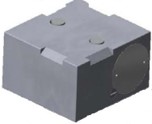
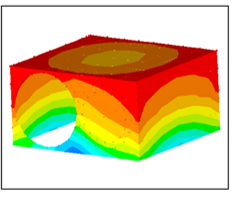
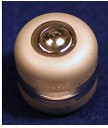
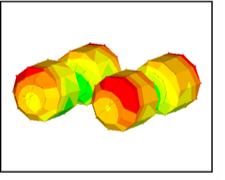
Clad and aeroshell simulated with SINDA – Systems Improved Numerical Differencing Analyzer
The Sandia-developed Loop Analysis Program Software (LAPS) code is used to systematically assess the response of these various reentry conditions. It drives four detailed phenomena codes. The Trajectory Analysis and Optimization Software (TAOS) code determines the trajectory through space and the atmosphere. The Heating Analysis Done Interactively (HANDI) program determines the boundary layer heating of the reentering object. The Charring Materials Analysis (CMA) code is used to determine the surface thermochemistry evaluation of the boundary layer at the wall to provide the connective juncture between the heating and thermal response codes. The net result of this analysis is a thermal and ablative history of the reentry object, a determination of whether it hits the ground intact or breaks up, and determination of the break-up altitude if it does break up.
Atmospheric reentry effects have the potential to breakup:
- Launch vehicle
- Space vehicle
- Space nuclear system
Determine effect from the range of the reentry environments on the configuration:
- Trajectory
- Heating of components
- Ablation (erosion)

Situations leading to reentry of the spacecraft into Earth’s atmosphere prior to insertion into the mission’s interplanetary trajectory are grouped as follows:
- Suborbital – Reentry due to accidents that occur after achieving 100,000 ft altitude and prior to the attainment of the nominal Earth parking orbit
- Circular Orbit Decay – Reentry from circular orbital decay. (All orbits eventually become circular in response to atmospheric drag)
- Powered, Elliptic Delayed, and Elliptic Prompt Reentry – These are reentry modes associated with misdirection of thrust. Powered Reentry results when the misdirection forces the spacecraft into the atmosphere while the attached upper stage is still thrusting. Reentry at velocities higher than orbital reentry is possible, but very unlikely.
Launch Safety Code Suite
With the use of the launch safety code suite, accident phenomena can be modeled. These phenomena include, blast and impacts, launch vehicle propellant fires, atmospheric reentry from space, accident sequence paths, atmospheric transport and food pathways, and health effects. The code suite is made up of hundreds of thousands of lines of code and scripts. Additionally, the code suite has been developed under control of a detailed quality assurance program. Depicted in the graphic is the flow of information.
Launch Accident Sequence Evaluation Program (LASEP)
LASEP models numerous potential scenarios, randomly choosing time of failure, explosion characteristics, release location and amount determined mechanistically. Typically, millions of different trials are run. Each trial provides a separate determination of the probability distribution for possible release amounts and size distribution of nuclear material. Distribution functions for material release are sampled and used as the source term for thousands of consequence simulations, where weather conditions and other atmospheric transport and consequence parameters are varied. A probability distribution for adverse consequences are the resulting outcomes.
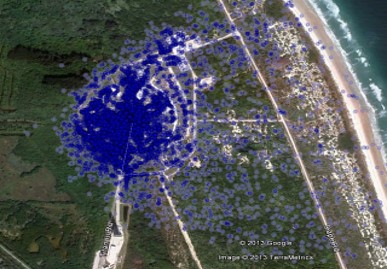
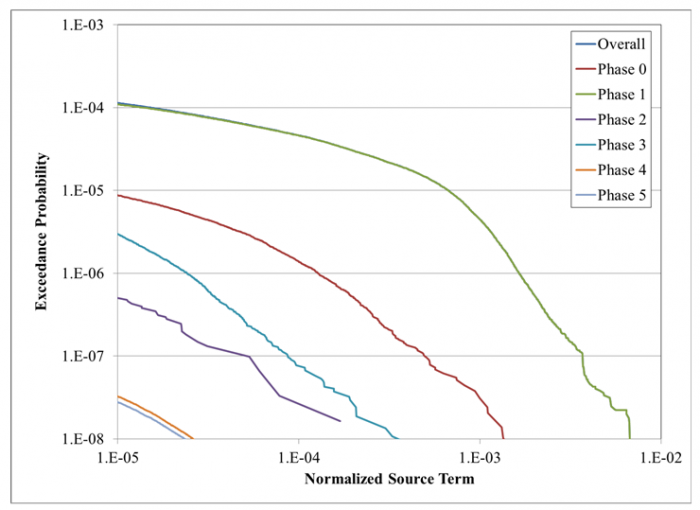
Risk and Uncertainty
Both risk and uncertainty provide a comprehensive picture to cover the entire analysis process, including:
- Performance of stability and convergence analyses
- Update of unknown probability distributions using Bayesian Methods.
